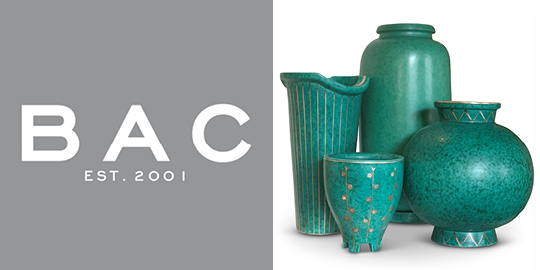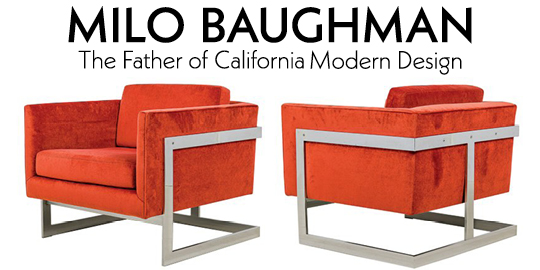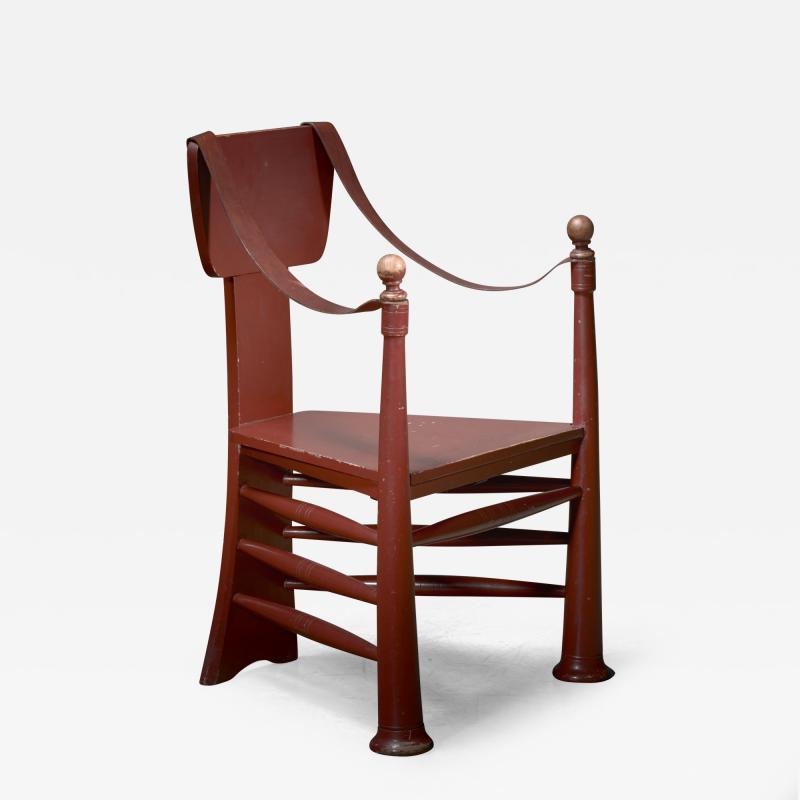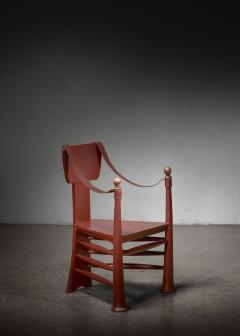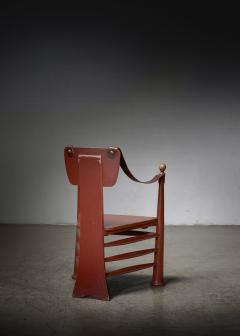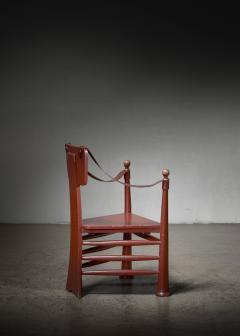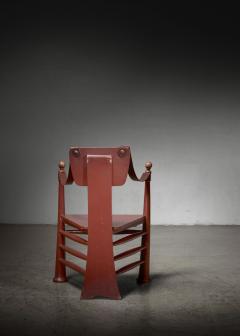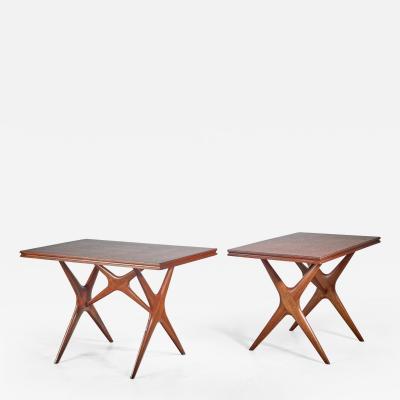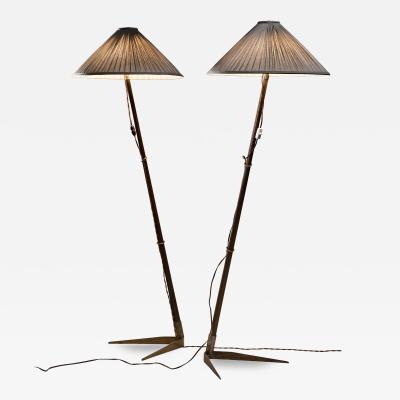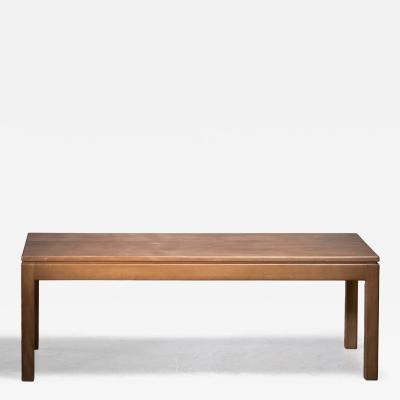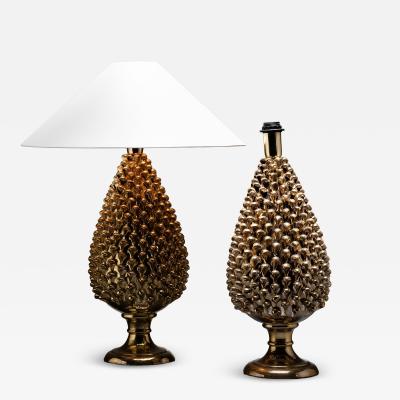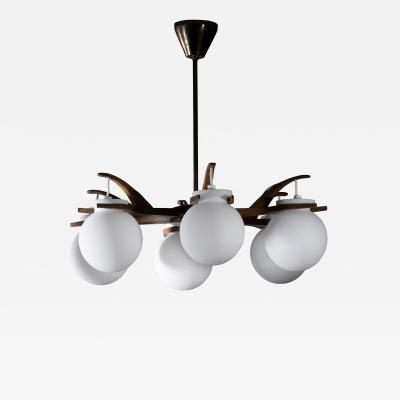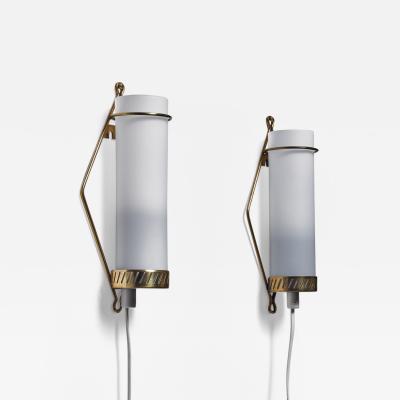Michel de Klerk garden chair
-
Description
A very rare garden chair by Amsterdam School architect Michel de Klerk. The chair is made of painted wood and has leather armrests. The first version of this chair was designed around 1905 for castle De Haar in Utrecht, the Netherlands. All of the interior elements were initially produced in a workshop in Maastricht, including at least six examples of this design. This chair was produced around 1910 by J.A. Huizinga.
In 1892 Pierre Cuypers (1827 - 1921) was commissioned by baron Etienne van Zuylen van Nijevelt and his wife Hélène de Rothschild to restore the castle from ruins and he spent twenty years on the project. Pierre Cuypers was a renowned architect and ‘Rijksbouwmeester’ (Chief Government Architect), who also designed the Rijksmuseum and Central Station in Amsterdam. Eduard Cuypers (1859 - 1927) was a nephew of Pierre Cuypers and was trained in his uncle’s architectural practice. In 1881, he set up his own office in Amsterdam. His contacts with businessmen earned him commissions for offices, shops and houses. Because Eduard and Pierre Cuypers worked with each other and were very close, Eduard moved with Pierre to Amsterdam when he was working on the Rijksmuseum. Around 1900 he started an atelier for interior design, Het Huis (The house), which he ran for a decade. Cuypers’ office is seen as the ‘maternity room’ of the Amsterdam School, as he employed draftsmen that became famed architects in the style later on: Michel de Klerk, Piet Kramer and Joan van der Mey. At the office, the young employees were relatively free to work according to their own ideas and develop their own style.
Michel de Klerk (1884 - 1923) was born as the 17th child of a then 78-year-old diamond cutter. Because he turned out to have a great talent for drawing in primary school, he was able to follow further education at a craft school. In 1898, Eduard Cuypers hired him as an assistant. De Klerk was barely fourteen years old when he started his employment and he would continue to work at the office for twelve years. As an independent architect, amongst other works, he designed the housing block ‘Het Schip’ (‘The Ship’), one of the most prominent examples of the Amsterdam School style.
Because of the close family ties of Eduard and Pierre, it is likely that Eduard was involved with the furnishing of the castle. This chair deviates from both other work of Eduard Cuypers as well as the other furniture in the castle. The chairs of this model (and most likely a table) didn’t have an important function within castle De Haar, as they were made as garden chairs for the châtelet of the house keeper of the castle, designed by Jos Cuypers, Pierre’s son. The fact that they were less important, supports the idea that the young and talented De Klerk was commissioned to design the chairs and it explains why they are so divergent in style from the interior of the castle as a whole. The chair can be seen as a precursor of a chair that was later (circa 1915) designed by De Klerk; it has similar front legs, sling leather armrests and turned side slats. It can be called a missing link between the Arts & Crafts style and the Amsterdam school and is therefore of great importance. -
More Information
Documentation: Documented elsewhere (similar item) Origin: Netherlands Period: 1900-1919 Materials: wood, leather Condition: Good. Good vintage condition Creation Date: 1910s Styles / Movements: Modern, Arts & Crafts, Art Nouveau Dealer Reference #: 8812 Incollect Reference #: 765425 -
Dimensions
W. 22.64 in; H. 34.65 in; D. 19.29 in; W. 57.5 cm; H. 88 cm; D. 49 cm; Seat H. 16.54 in; Seat H. 42 cm;
Shipping Information:
Bloomberry offers worldwide shipping.
Message from Seller:
Bloomberry, located in Meerssen, Netherlands, offers a curated collection that blends architecture, art, and design, with an emphasis on craftsmanship and the marks of time. For inquiries or worldwide shipping, contact patricia@bloomberry.eu or call +31 650 502 753.








